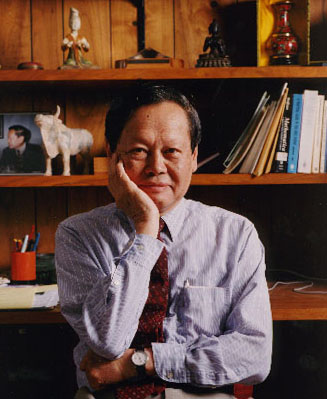
GEORGE STERMAN
Distinguished Professor
Physics and Astronomy
george.sterman@stonybrook.edu | (631)-632-7967, Math Tower 6-108
Research Group Website
Curriculum Vitae. (Last updated: 2023 Aug 18)
Biography
George Sterman received his bachelor’s in physics from the University of Chicago,
and doctorate from the University of Maryland, College Park in 1974. He held postdoctoral
positions at the University of Illinois, Urbana-Champaign, Stony Brook and the Institute
for Advanced Study. He joined the Institute for Theoretical Physics (now YITP) at
Stony Brook in 1979 as Assistant Professor, and has remained since then. He has served
as the Director of the YITP since 2001 and was named Distinguished Professor in 2004.
Over the years, his work in quantum field theory played an influential role in the
confirmation of quantum chromodynamics as the theory of the strong interactions, in
the development of quantum field-theoretic tools for the interpretation of events
at high energy colliders, and for their use in the search for new physics. His contributions
to the concepts of infrared safety, factorization, and resummation were recognized
by a Guggenheim Fellowship, APS Fellowship and the J.J. Sakurai Prize in Theoretical
Particle Physics (shared with Alfred H. Mueller). He has lectured widely in advanced
summer schools, including the TASI and the CTEQ series, and is the author of the book
An Introduction to Quantum Field Theory.
Research Statement
The last decades of the twentieth century and the first of our current century saw
the discovery of all the particles within the Standard Model, which successfully describes
the visible universe to the precision currently available, with a few tantalizing
exceptions. The establishment of such a fundamental theory does not close off research,
but results in new frontiers, testing current theoretical tools against the joint
demands of theory and nature. The interpretation of pending runs of the Large Hadron
Collider and of the approved Electron Ion Collider will require further progress in
precision perturbative calculations, and will afford the opportunity to test quantum
field theory with increasing precision over unprecedented time and energy scales.
My current work is oriented towards reformulations of perturbative techniques in quantum
field theory to meet these demands, and to the development of new observables that
can potentially reveal the non-perturbative evolution of strongly interacting systems
at high energy.
|
|
|


